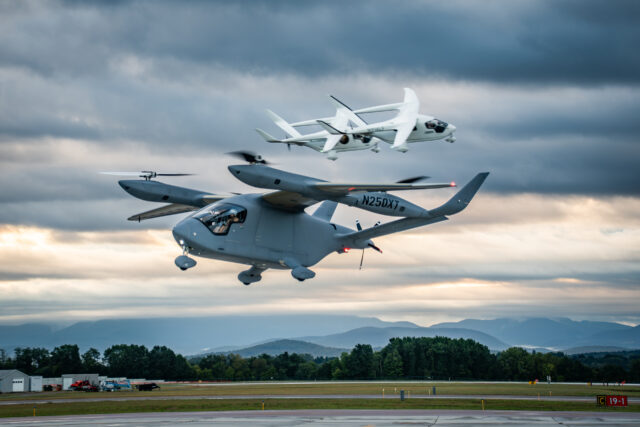Inside NASA’s HyTEC: the compact turbine core redefining jet engine efficiency

October 24, 2025

Recent turbine engine concepts aim for efficiency and sustainability through a variety of technologies, including open fan architecture and adaptive cycle engines. These technologies target a compact and efficient core that can maximise power output while minimising the engine’s size and weight.
NASA is working alongside GE Aerospace and other industry partners to develop a compact core for next-generation hybrid-electric turbofan engines. The Hybrid Thermally Efficient Core (HyTEC) project is a key component of NASA’s Sustainable Flight National Partnership. Use of lightweight, thermal-resistant materials reduces the specific fuel consumption by 10% compared to existing turbofan engines.
The importance of a compact core for the next generation of turbine engines
The efficiency of a jet engine is measured through various parameters, the most important of which is the compression ratio of the engine core. It is the ratio of the air entering the core and hot gases exiting during expansion. By making the core smaller and more compact, the propulsive fuel efficiency of the turbine can be improved while reducing carbon emissions.

The performance of the engine core depends on how much and how fast the incoming air is compressed. Subsequently, the ability of the core materials to withstand high temperatures during operation is required. This can be achieved through a combination of technologies in design, aerodynamics, materials, and thermal management of turbine engines.
Design and engineering of a compact engine core
From a design perspective, the bypass ratio of the engine is optimised to maintain the same thrust output. It is the ratio of the air entering the engine core to the air bypassing it. While decreasing the core size, the turbofan it powers is enlarged to achieve higher power output.
NASA’s HyTEC concept core is developed in conjunction with the CFM RISE programme, enabling a much higher bypass ratio, compactability, and hybridisation.

The leader of the RISE program technologies at GE Aerospace, Kathleen Mondino, commented,
“HyTEC is an integral part of our RISE program. GE Aerospace and NASA have a long history of collaboration to advance the latest aviation technologies. The HyTEC program builds on this relationship to help chart the future of more sustainable flight.”
Aerodynamics is key to compact core designs
The advanced high-pressure compressor concept requires aerodynamically efficient design and tighter clearances to optimise the efficiency of the compact core. The curved-profile airfoils for rotating and stationary stages of the compressor create optimal lift and maximise thrust.
Curious about our fan blade #engineering? 🤔
— GE Aerospace (@GE_Aerospace) January 31, 2024
Let’s dive into the innovation that goes into a #GEAerospace composite blade… in 27 seconds or less! pic.twitter.com/buJbbD8d75
These are designed to allow the incoming air to travel faster on one side of the surface than the other, creating optimum pressure difference for thrust. A combination of straight, curved, and twisted airfoils is used depending on the location and compression stage.
Materials and thermal management
Heat-resistance properties of the core materials limit the maximum turbine efficiency. Hotter engines deliver greater output thrust per unit of heat input, enhancing propulsive efficiency. While existing nickel-based alloys and ceramic composites offer high heat resistance, there is an ever-growing need for further improvement.

The University of Virginia, along with industry partners, is developing a rare nature-based composite coating to enhance the heat resistance of refractory metal alloys. Similarly, major engine manufacturers are testing new techniques for cooling high-temperature components such as combustors, nozzles, and turbine blades to minimise thermal loading.
Whether it is through protective coatings or efficient cooling techniques, the aviation industry is pushing the limits of material sciences.
















